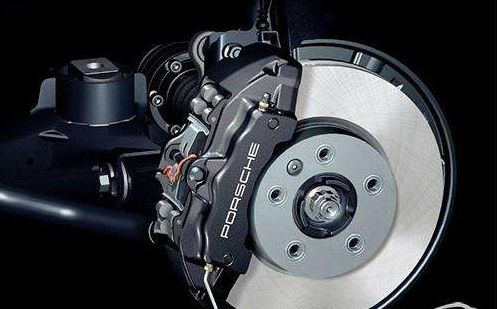The brakes usually come in two forms: "drum brake" and "disc brake". With the exception of a few small cars that still use drum brakes (e.g. POLO, Fit's rear brake system), most models on the market use disc brakes. Therefore, the disc brake is only used in this paper.
Disc brakes (commonly known as "disc brakes") work by using calipers to control two brake pads that clamp onto the brake discs on the wheels. By rubbing the brakes, the pads become thinner and thinner.
The thickness of a new brake pad is generally about 1.5cm, and both ends of the brake pad have a raised mark, about 3mm. If the thickness of the brake pad is flat with this mark, it should be replaced immediately. If not replaced in time, the brake disc will be severely worn.
From the mileage of the car, brake pads should not be a problem, usually driving mileage to 60,000-80,000km is recommended to replace the brake pads. However, this mileage is not absolute, and driving habits and environment related. Think of your friend as a violent driver, almost stuck in the city all year round, so premature brake pad wear is likely. It can be judged from the abnormal metal sound of brake pads that his brake pads have been worn to the position below the limit mark and need to be replaced immediately.
The brake system is directly related to the life of the owner, so it should not be underestimated. So once the brake system gives out abnormal sound, we must pay attention to it.
Other reasons that are easily overlooked
In addition to normal wear and tear, small sand can also be a brake pad abnormal sound culprit. In the vehicle driving, there will be a very small sand into the middle of the plate and disc, because of friction abnormal sound. Of course, don't worry about this, just run and let the small grains fall out.
There is also a special case - if the new brake pad is not running well, there will also be abnormal sound. The newly replaced brake pads will be hard and will be better after about 200 kilometers. Some owners will speed up and slam on the brakes, to achieve a short period of running in the brake effect. However, this will reduce the brake pad life. It is recommended to run for a period of time to observe this situation, do not go to artificially forced wear brake pads.

In fact, in addition to the brake pads, there are many reasons for the abnormal sound of the brake system, such as installation operation, brake disc, brake calipers, and chassis suspension are likely to cause abnormal sound, the car mainly develop the good habit of maintenance inspection, prevent harm in the future.
Maintenance cycle of brake system
1. Brake pad replacement cycle: generally 6W-8W km or about 3-4 years.
The vehicle equipped with brake sensor line has an alarm function, once the wear limit is reached, the instrument will alarm the replacement.
2. The life of the brake disc is more than 3 years or 100,000 kilometers.
Here's an old mantra to help you remember: Replace the brake pads twice, and the brake discs again. Depending on your driving habits, you can also change the plates in threes or slices.
3. The replacement period of brake oil shall be subject to the maintenance manual.
Under normal circumstances 2 years or 40 thousand kilometers need to be replaced. After the use of brake oil for a long time, the leather bowl and piston in the brake pump will wear, resulting in brake oil turbidity, brake performance will also be reduced. In addition, brake oil is relatively cheap, avoid saving a small amount of money to cause a big loss.
4. Check the hand brake regularly.
Take the common pull rod handbrake as an example, in addition to the braking function, also need to check the sensitivity of the handbrake. Teach you a small tip, in the flat road slow driving, slow handbrake, feel the sensitivity of the handle and joint point. However, this kind of inspection should not be too many times.
In short, the whole system is related to life safety, 2 years or 40 thousand kilometers should check the brake system, especially often go high speed or long-distance driving car, more need regular maintenance inspection. In addition to professional inspection, some self-testing methods for car friends reference.
A look: most disc brake pads, through the naked eye can observe the thickness of the brake pad. When a third of the original thickness is found, the thickness should be observed frequently. When parallel with the logo, it should be replaced immediately.
Two listen: listen to the sound can also judge whether the brake pad has been worn thin, if you just step on the pedal to hear a sharp and harsh "byi Byi" sound, indicating that the thickness of the brake pad has been worn to lower than the logo on both sides, leading to the logo on both sides of the direct friction brake disc. But if it is the brake pedal to the second half of the abnormal sound, it is likely to be brake pad or brake disc work or installation caused by the problem, need to check in the store.
Three steps: when stepping on the brake, it is difficult, but also that the brake pad has lost the friction, this time must be replaced, otherwise there will be life danger.
Four test: of course, it can also be judged by braking examples. Generally, the braking distance of 100 km/h is about 40 meters. The more the distance exceeds, the worse the braking effect is. Swerving on the brakes we've talked about this before and I won't repeat it.
Post time: May-23-2022










